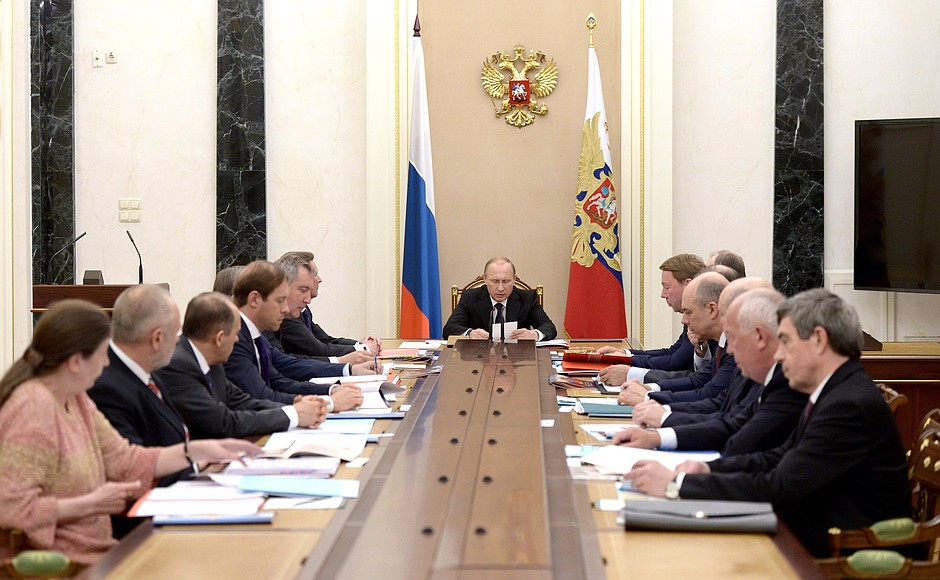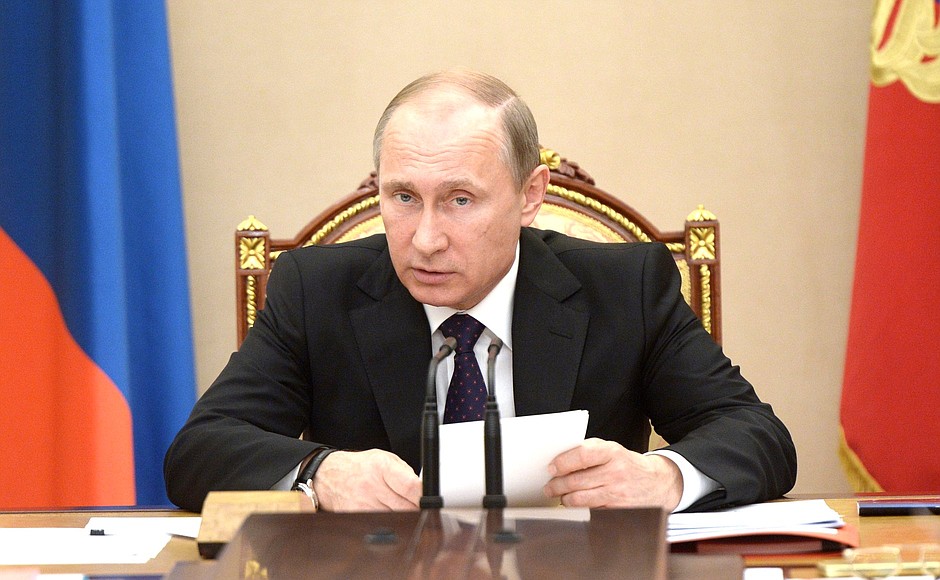The meeting made a final review of the results for 2014 and discussed plans for the next three years.
* * *
President of Russia Vladimir Putin: Good afternoon, colleagues.
This is the second meeting of the Commission for Military Technology Cooperation this year. I propose that we sum up the final results in this area for 2014 and clarify our plans for the coming three years.
Russia’s military exports came to more than $15.5 billion in 2014. Our exports have held steady at this level for the last three years now. This puts Russia confidently in second place among the world’s arms exporting countries. This is a major achievement on what is a difficult and fast-changing market. International institutions’ statistics put the United States in first place with 31 percent of the market. Russia, as I said, is in second place, with 27 percent of the market. The other players follow at a considerable distance.
I want to thank Russia’s arms manufacturers, who, year after year, maintain our defence sector’s best traditions and design and manufacture sophisticated and advanced military equipment able to compete with success on the international arena.
I note that these achievements are the result of systemic work to promote Russian goods and technology in the military technology cooperation sector. Last year, our defence companies took part in 24 international salons, Russian goods were exported to 62 different countries, and Russia has military technology agreements with 91 countries in total.
The measures taken to optimise the legal framework for military technology cooperation have had a noticeable effect. Decision-making procedures in this area have been simplified substantially over the past year. Russian companies and agencies now find it easier to keep in contact with foreign partners at all stages, from product design to servicing. In 2014, they signed new contracts worth a total of $14 billion. Today, the portfolio of export orders is stable and comes to more than $50 billion.
At the same time, we need to keep moving forward, of course. We must keep setting our standards higher, develop cutting edge arms and equipment, train a new generation of top-class specialists and strengthen Russia’s position on global markets.
Of course, we are having to work in difficult circumstances. More and more frequently, we encounter attempts at direct confrontation, and sometimes these attempts go beyond the bounds of normal competition and are frankly aggressive in nature. It is possible too, that political instruments are being used as veiled means for pursuing competition.
We have before our eyes the example of our neighbour, Ukraine, where the rupture of longstanding cooperation ties with Russia, vital ties for many Ukrainian defence companies, have brought many of these companies to the brink of bankruptcy and forced them to lay off qualified personnel.
We will, of course, continue to develop our military technology ties with all our allies and strategic partners. At the same time, we will continue implementing our import replacement programmes in the defence industry and expand into new markets.
Regarding import replacement, as we agreed and set out in our plans, this must be carried out using a completely new, modern and future-focused technological base.
Our competitive advantages include many years of successful experience operating Russian-made arms in all types of climates. Several generations of military specialists in different parts of the world, in Asia, Africa and Latin America, have gained experience in using these weapons. They know well the qualities of our arms – above all their reliability and a high degree of effectiveness.
Naturally, we will not develop military technology cooperation only with our traditional customers. We have plans for expanding into new markets too. This requires us to organise the foreign trade activities of military technology cooperation actors in such a way as to meet the demands of the global arms market today and be able to respond rapidly to changing circumstances.
We also need to place more emphasis on joint production, as we have been doing, for example, with our Indian partners. We must continue developing a broad network of service centres for after-sales service of our goods. Finally, we must make use of the potential offered by the intergovernmental commissions and working groups representing agencies responsible for developing military technology cooperation.
<…>

